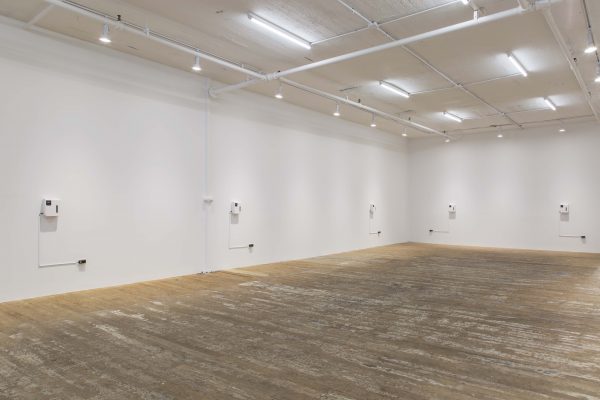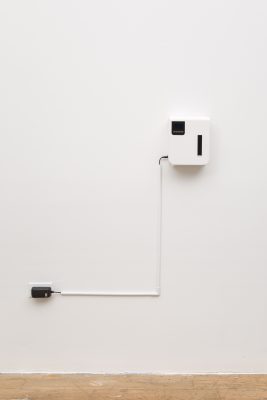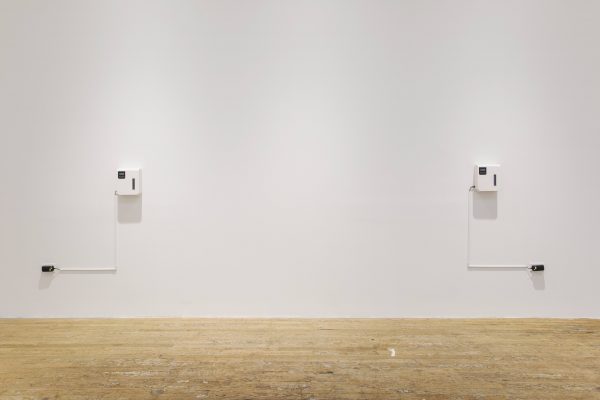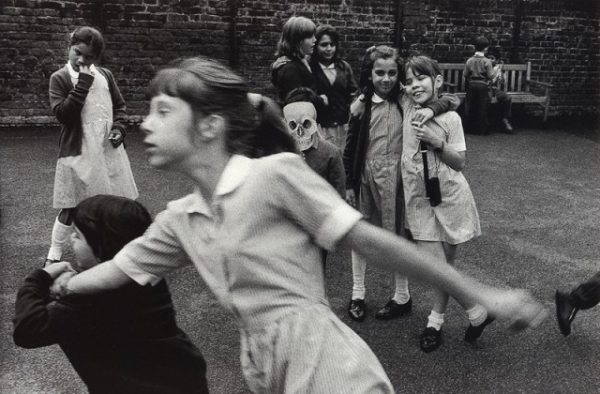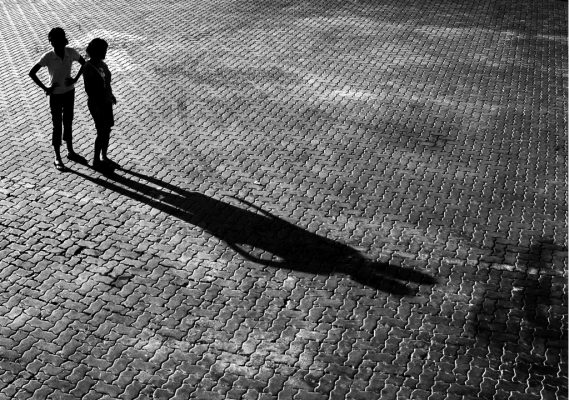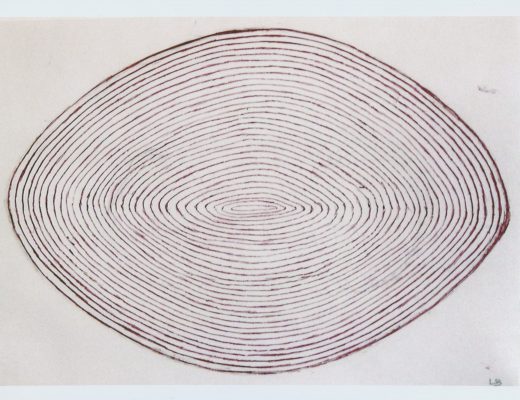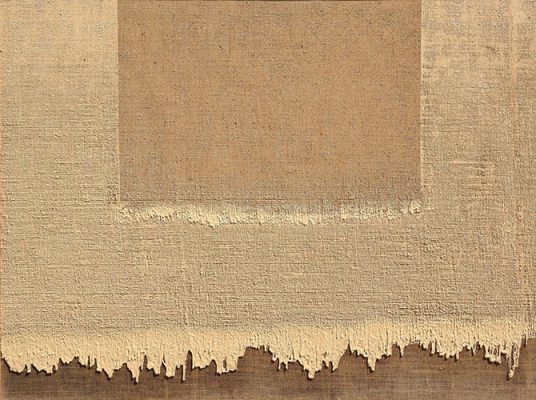How well do you know your nose? That organ is the gateway to our least understood sense, a network of more than 400 types of receptor cells. (Our retinas, by contrast, have just three.) Though most are concentrated in a bulb near our frontal lobe, olfactory receptors have cropped up in skin, livers, kidneys and sperm. Smell is a powerful memory recall tool, and it can make us want to fuck, vomit or cry – but why and how all this works remains largely a biological mystery.
This enigma drives Sean Raspet, an artist and self-trained food-and-fragrance scientist whose art is microscopic in scale. Past shows at Société, Berlin have featured large plastic vats of stuff he’s cooked up in a lab: molecular compounds meant to tease our tongues or trigger our nostrils. These concoctions are often clear and near-weightless, and can take the form of a liquid or a gas. In his current exhibition ‘Receptor-Binding Variations’ at Bridget Donahue Gallery, New York, Raspet has devised ten ‘primary scent formulations’ that, like primary colours, trigger the range of our olfactory sense. Brewed from ‘captive molecules’, or particles patented by the fragrance industry, they are housed in bone-white electric diffusers that spout their scent every 60 seconds. Many of their manufactured molecules are designed to deceive the human nose: to us, they can smell more like natural goods than the organic chemicals they imitate, frustrating attempts to sniff out their origins. In the gallery, all these compounds blend together to produce the faint aroma of rubber gym flooring, inoffensive but slightly unsettling.
Each compound, and thus each work in the show, is labelled with the name of the receptor it’s meant to target (all works 2017). The first diffuser, 52D1, gives off a strong whiff of citronella, with notes of the artificial pineapple aroma of white gummy bears. Number two, 3A1, 2AE1: a distinct odour of freshly mown grass. At first pass, 2V2, 2V1 smelled like an herbaceous gin; when I returned several minutes later, I detected the sweetness of kiwi. 2L5, lemon Pledge; 7G3, 8K3, 1J2, fresh asphalt; 52D1, a sweaty armpit. 1A2 was utterly confounding, first as sharp as nail polish, before curdling into a nutty tone of marzipan. All my prior sensory experience was bunk as my nose spoke to me in a language I struggled to interpret. I began to worry: was I ‘anosmic’ – scent blind – or smelling something new, awakening a dormant receptor?
Raspet has called our impulse to describe the scent of compounds according to the things to which they give smell ‘the circularity of referential terminology’. The organic compound isoamyl acetate, for instance, doesn’t smell like bananas; bananas smell like isoamyl acetate. In an essay for the Winter 2016 issue of Future Anterior: Journal of Historic Preservation, History, Theory, and Criticism, Raspet proposed a new system consisting of three sets of 30 non-referential terms that could be combined to describe as many as 27,000 distinct odours. And so, in light of Raspet’s essay, I revise my notes: not pineapple but ‘harmonic’; ‘shrill’ instead of grass. 10R2 – fresh nutmeg leaves – could be either ‘resonant’ or ‘reactive’.
‘Olfaction, as it discerns chemical structures, is capable not only of informing us of the nature of matter as it exists but also as it could possibly exist,’ Raspet writes. Employing this sense in artistic experimentation is his way of embracing futurity, suggesting we might not just be able to imagine a different world, but smell one, too. Raspet creates sculpture for the age of gene therapy and greenhouse gases, bioengineered foods and melting icecaps. His work’s carbon footprint is smaller than that of most contemporary art. By circulating not just within a given public but within the bloodstreams of the people who sniff and taste them, his molecular compounds boost the metabolic efficiency of artistic production, like a dose of aesthetic ginseng. Many of them already flow through us, ingested from common foods or absorbed dermally from beauty products. (What artist can claim to have reached such a large public at such an intimate scale?) The apparent artificiality of Raspet’s work, while revealing our pursuit of organic purity as laughably futile, reminds us how little we understand the human body.
Bridget Donahue is located in Chinatown, one of New York’s most pungent neighbourhoods. On my walk over, I pass stalls of ice-packed fish and bins of gnarled, desiccated roots and spices. Lorries unload crates of fresh produce onto sidewalks sticky with gasoline and other refuse. Along Bowery, the wind whips up downtown Manhattan’s thick carbon stink. When I leave the gallery, though, I feel more attuned to the textures of these scents: not just fish but tuna, mackerel, and saltwater squid. The perfume of dried mushroom caps meets that of fermented barley. Other possible terms: foamy, saw-toothed, sticky, tangled. Raspet’s work had awakened me to sensory details of a world I thought I knew, a feeling no words can truly capture.
